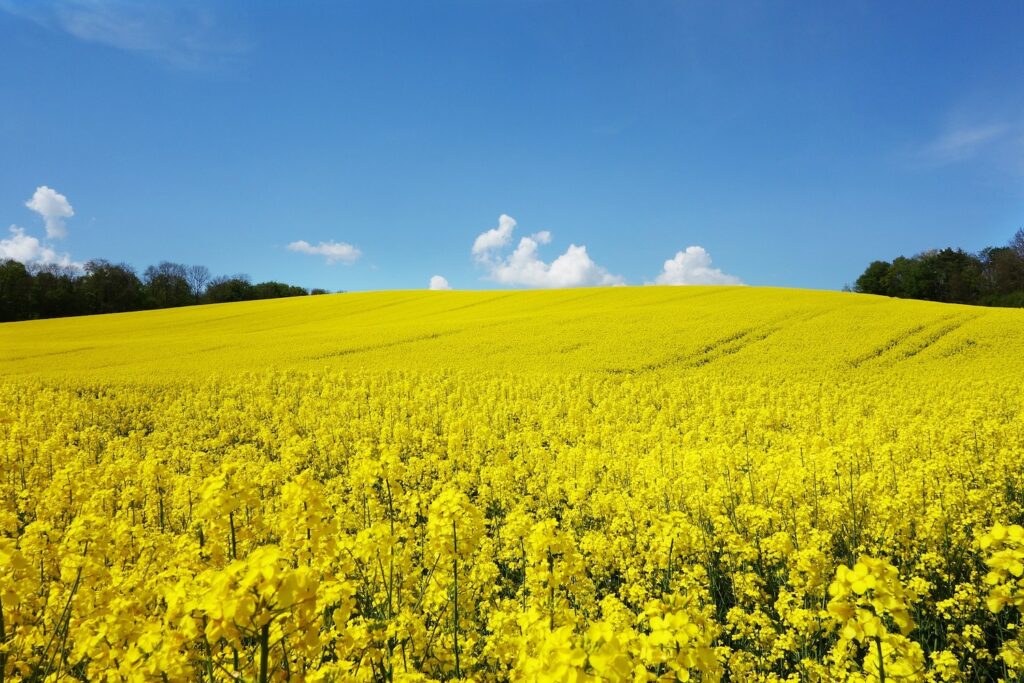Weather “much more important than CSFB in OSR performance”
15th December 2020
Analysis sheds light on last season’s winter OSR, which was the lowest-yielding harvest since 2001.
Weather was a much bigger factor than cabbage stem flea beetle in the disappointing performance of last season’s winter OSR, according to the latest ADAS Oilseed YEN analyses.
Exploring the reasons for the lowest-yielding OSR harvest since 2001 at a recent technical webinar for YEN growers, ADAS head of crop physiology, Dr Pete Berry identified the dry start in some areas, very wet winter, very dry spring and dull summer across the country as particular challenges.
“High CSFB pressures were certainly a problem for many last autumn,” he accepted. “But poor conditions in September and October prevented crops from growing away from the pest as well as they would otherwise have done. Very wet weather right through to the end of February then left those that survived seriously compromised in their early growth in general and rooting, in particular.
“The dry and sunny April did help avoid excessive canopies and ensure a very good seed set, with YEN crops producing the highest average seed number in the four years of the competition, at 116,000/m2.
“However, continued lack of water through May and dull conditions into the summer really restricted seed fill; especially so with the crops’ restricted root systems. The extent of this was obvious in an average thousand seed weight of just 4.05g, the lowest in the four years.
“Plant biomass was sub-optimal and the lowest we’ve seen to date too, as was an average yield of 4.29 t/ha,” he added (Table).
Table: YEN OSR Yield Components 2017-2020
| 2017 | 2018 | 2019 | 2020 | |
| Seeds/m2 | 95,000 | 105,000 | 100,000 | 116,000 |
| TGW (g) | 5.17 | 4.42 | 4.86 | 4.05 |
| Biomass (t/ha) | 13.1 | 13.1 | 12.4 | 10.6 |
| Seed yield (t/ha) | 4.94 | 4.65 | 4.78 | 4.29 |
The crucial importance of weather was underlined by growers participating in the webinar. While 17% of them rated CSFB damage at establishment and a further 17% larval infestation in the spring the biggest challenge their crops faced last season, 55% put either the autumn/winter or spring weather in the Number One slot.
With a vast range of yields across the 2020 YEN crops, what associations have the ADAS crop physiology team seen between performance and key crop development and management factors?
Surprisingly perhaps given anecdotal reports, the top 50% performing crops (averaging 5.4t/ha) were sowed 11 days later than the bottom 50% (averaging 3.2 t/ha) on August 31 on average. They were also grown at a noticeably narrower average row spacing.
The better performing crops finished flowering and were harvested an average of 10 days later, so enjoyed a significantly longer seed fill. And they received more fungicide and PGR sprays – presumably leading to more efficient canopies.
“Despite the very poor seed fill, we continued to see a strong association between the number of seeds set and yield,” Dr Berry reflected. “Producing more than 100,000 seeds/m2 remains the single biggest factor in achieving high yields.
“Unlike previous years, though, we didn’t see a positive association between number of nitrogen applications and yield; almost certainly due to restricted uptake in the very dry spring and early summer.
“Of course, the true impact of CSFB is not fully represented by YEN yields because they obviously exclude crops lost to the pest. Larval infestation must have been responsible for some of the poor performance, but how much is difficult to quantify. Having said that, it’s surprising both how much adult damage crops can tolerate at establishment and how well it can compensate for even relatively high larval levels in the spring – providing they get the right growing conditions.”
As well as achieving a better understanding of CSFB and how to manage it, therefore, improving OSR’s resilience to the weather will be critical to the future of the crop. Better soil structure and health are likely to be important here, alongside the most effective establishment and canopy management.
Varieties with sufficient all-round agronomic strength to resist and tolerate environmental challenges rather than just yield potential look like being an essential element in this equation. And matching varieties and their agronomy increasingly carefully to drill timing, seedbed conditions and local risk will be more important than ever.
For drilling before mid-August, for instance, varieties with a steadier pace of autumn development, greater standing power and better resistance to light leaf spot and clubroot, should clearly be preferred. Given the higher burdens of flea beetle larvae widely- recognised in earlier-sown crops, a better ability to compensate in the spring and management designed to build upon it should also be priorities.
Where drilling is delayed until September, however, faster-developing varieties with stronger phoma resistance become more important considerations, together with seedbed nutrition and other ways of helping crops escape or grow away from CSFB.
“Whatever the approach, all our YEN evidence and wider OSR management experience points to the vital importance of having sufficient moisture at drilling and through initial establishment,” Dr Berry concluded. “Crops that don’t have this are always likely to struggle and may well not repay the investment needed to take them through to harvest.
“In this context, it’s really encouraging to see the contrast between this season’s crops and last, despite our monitoring across the country for AHDB continuing to show high levels of flea beetle in many areas.
“Of those growers involved in our webinar with OSR currently in the ground, none have had any crop failures so far in 2020, with over 90% reporting good establishment and less than 10% seeing backward crops. This gives us far more optimism for 2021.”

